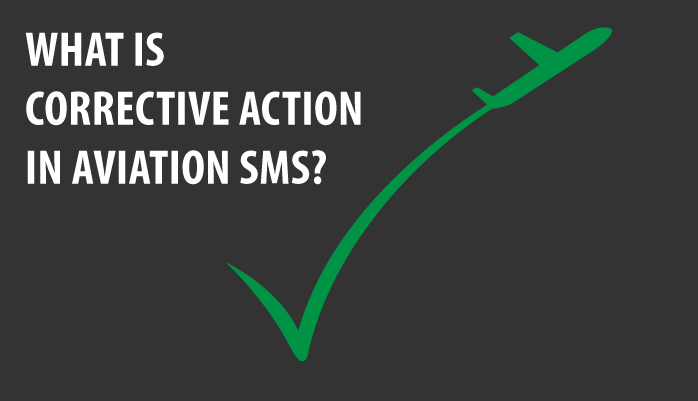What Is a Corrective Action?
A corrective action is an action used to correct any negative element of a risk management program. Most commonly corrective actions are used as corrective-preventative actions, or CPAs. You may also see them called CAPAs (corrective action preventative action) or RCAs (recommended corrective action), though CPA is the most recognized globally in the aviation industry
Whatever you call them, the point is that corrective actions are used to implement changes of the “corrective” type. Corrective actions correct safety issues by making changes that bring a piece of the safety program into an acceptable level of risk or as low as reasonably possible (ALARP).
Corrective actions differ from:
- Preventative actions: preventative actions are used to include a new element into the SMS in order to reduce the likelihood of undesirable things (which may not have happened yet); and
- Detective actions: detective actions are used to include new elements into the SMS in order to identify emerging undesirable elements.
Corrective actions are generally considered as a part of reactive risk management activities. Having effective corrective action implementation strategies is absolutely essential to the development and success of the aviation program.

Process for Creating Corrective Actions
Corrective actions originate in the following format:
- A safety incident is reported and safety mangers are notified;
- A preliminary investigation and risk assessment are performed;
- Based on the assessment and investigation, the responsible manager will determine what the root causes of the issue are;
- Based on these findings, he/she will issue corrective action(s) to employees in order to correct the problem(s);
- The employee(s) assigned the corrective action(s) will perform whatever duties are required to fulfill the corrective action(s); and
- The responsible manager will accept/reject the performance until the corrective action(s) are complete – at this point the CPA is considered to be implemented.
As shown above, corrective actions are almost always triggered by some kind of safety event. But as pointed out, while corrective actions are part of reactive risk management this does not mean that corrective actions are “lesser” than, say, a proactive action such as preventive or detective.
First and foremost an aviation SMS program needs to be able to quickly and efficiently fix problems.
Corrective Actions Examples
Corrective actions can be duties focused on individual correction, or correction of the SMS in general. Corrections of individuals are commonly things like:
- To attend remedial aviation SMS training;
- To review company policy and procedures; or
- Probation, performance reviews, etc. (usually in more serious circumstances).
Corrects of the SMS in general would be things like:
- Updating a dated safety policy or procedure;
- Replacing a malfunctioning/old piece of equipment, sign, etc.; or
- Fixing an area of non-compliance in the program.
What Is Needed for Managing Corrective Actions
Corrective actions are implemented and managed much in the same manner as small projects. Managers with strong project management skills will have an advantage implementing corrective actions:
- Within required time frame (i.e., by assigned deadline);
- With available tools; and
- To the fullest potential – i.e., smooth implementation.
Beyond project management skills, other tools that are helpful are simple tracking tools to monitor:
- Which CPAs have been assigned to whom;
- CPA deadlines; and
- CPA status.
One example is a CPA Manager tool.